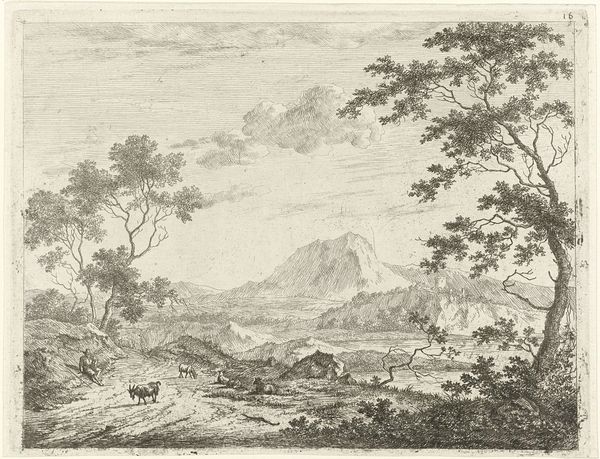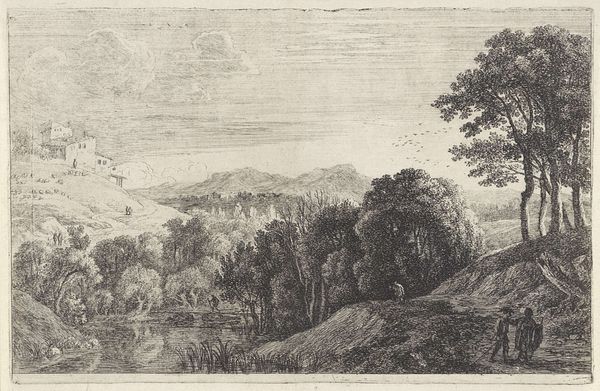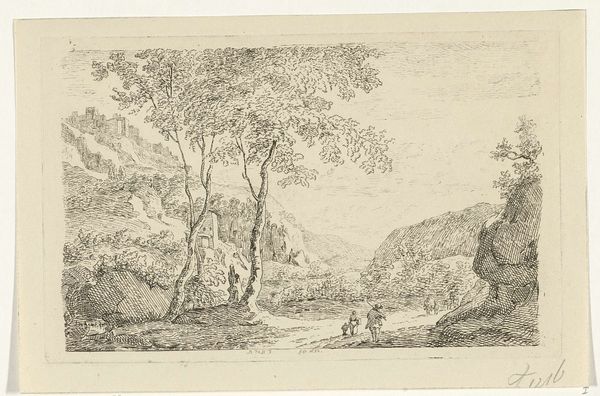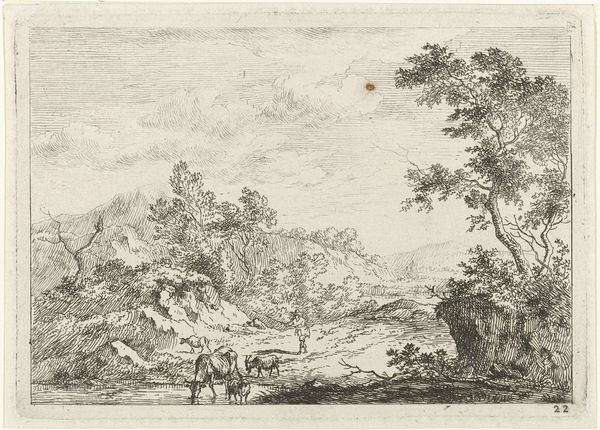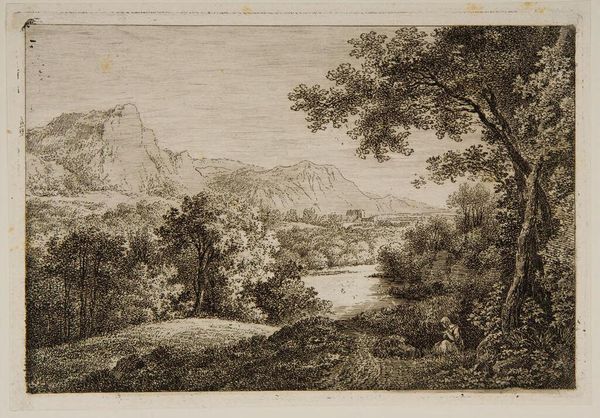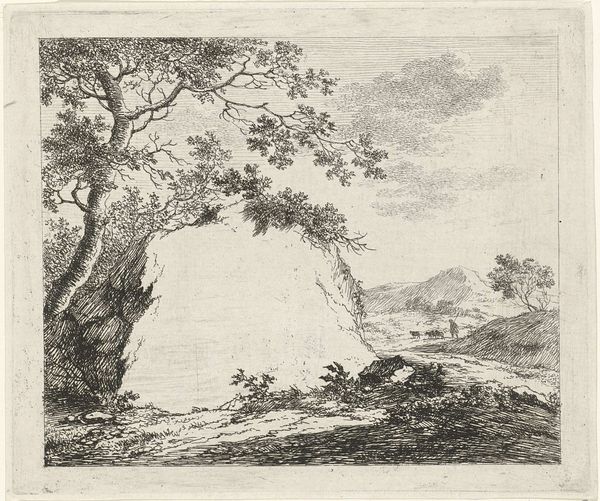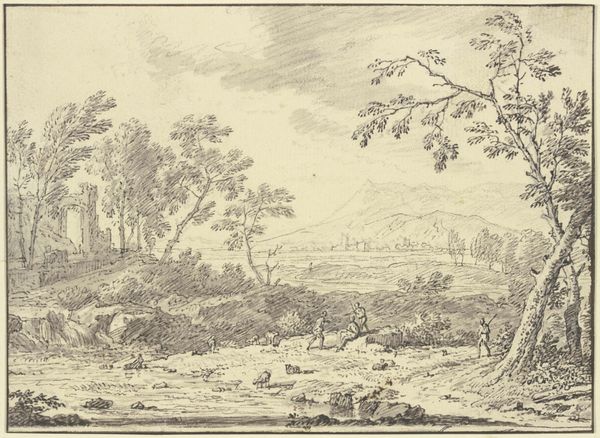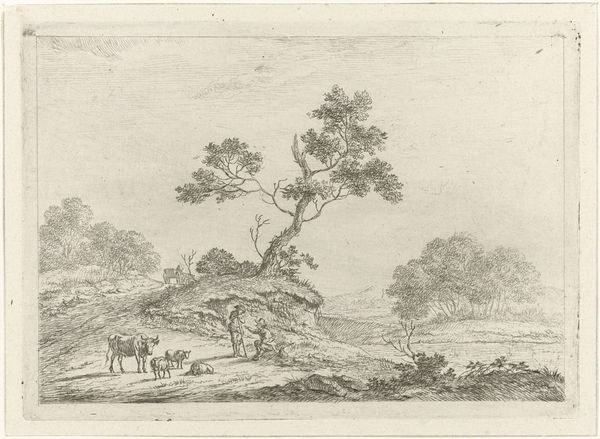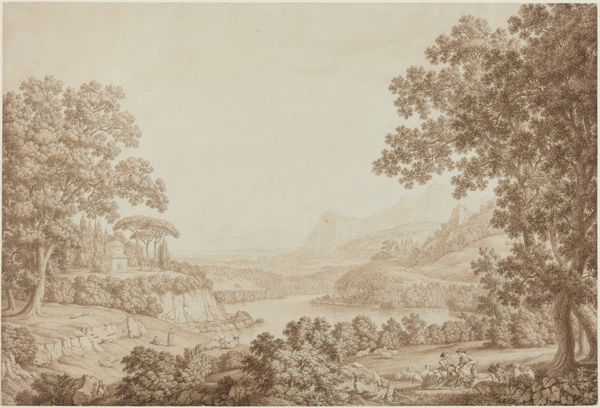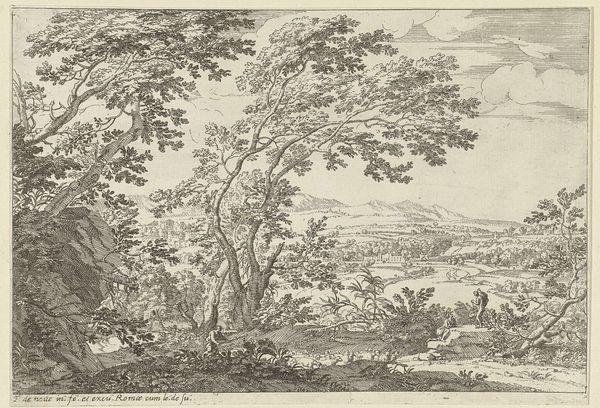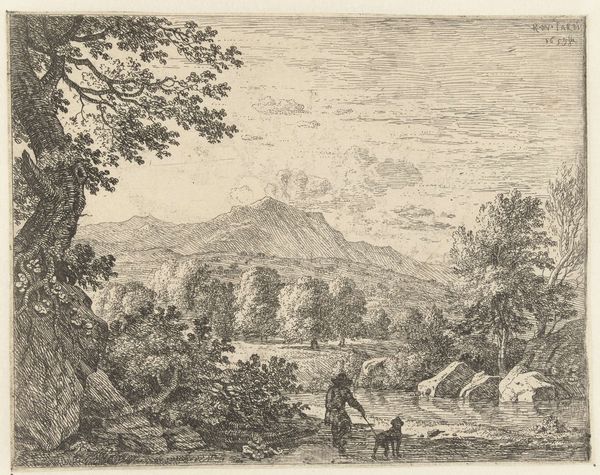
Dimensions: height 166 mm, width 212 mm
Copyright: Rijks Museum: Open Domain
Curator: Here we have Johannes Janson's "Bergachtig landschap met rustende herder," or "Mountainous landscape with resting shepherd," made between 1761 and 1784. It's currently held at the Rijksmuseum. Editor: The intricacy! The delicate etching gives this landscape a dreamlike, almost ethereal quality. There's a quiet solemnity to it that really draws me in. Curator: The etching process allows for incredibly fine lines. The labour involved in creating such a detailed scene through repeated acid baths is considerable. And think about the paper, too, likely a linen rag blend, quite durable. It suggests a market that valued replicable art. Editor: I find the contrast interesting. The tiny figures in the foreground - the resting shepherd and his flock - versus the towering mountain in the background. It creates this feeling of human insignificance against the backdrop of nature's grandeur. This resonates deeply within Romanticism. Curator: The artist positions labour within the vastness of the world. How the shepherd's pastoral life, the rearing of animals, becomes almost insignificant. Even so, the image depends on human and animal presence for scale and perspective, offering an interplay between scale and work. Editor: The trees too – they seem almost like sentinels, framing the scene and adding to that symbolic weight. I'm curious about the mountain, almost conical in shape. Does that specific formation hold symbolic meaning or perhaps reference an actual place known to the artist or the audience? Curator: Knowing this would illuminate much about intended use. Perhaps the artwork offered some political charge, some societal critique embedded within its materiality? Editor: Or perhaps it's an imagined landscape designed to evoke feelings of awe and introspection. Regardless, this speaks to the human desire to connect with something larger than ourselves. Curator: Reflecting on Janson's etching, I am struck by the confluence of labor, materials, and social commentary within a pastoral scene. Editor: For me, the landscape becomes more than scenery. It's a vessel filled with cultural memory, where universal feelings get anchored in very precise, deliberate images.
Comments
No comments
Be the first to comment and join the conversation on the ultimate creative platform.
